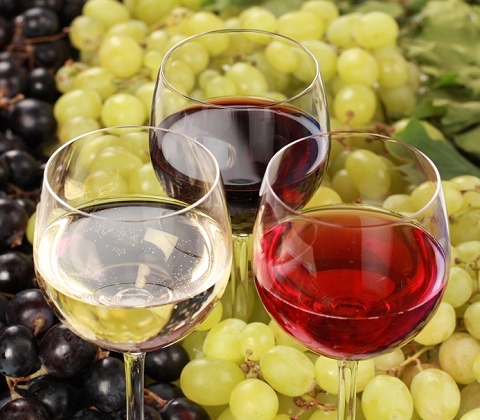Wine tasting
Date published: 07 June 2014

Wine plays a big part in people's lives
Judging by my friends, wine plays a big part in people's lives. Whether it's a welcome glass after a stressful day or with your weekend dinner, one things for sure we can't get enough. 1.6 billion litres was consumed last year alone in the UK.
I recently passed my advanced wine exams and am looking to take my degree. This is a topic of hilarity with my friends as far as they are concerned you buy a bottle, open it and drink it, and there is nothing wrong with that. However, your glass of alcoholic grape juice wasn't synthesised in a laboratory, it is a natural product which has taken thousands of years to perfect, we should at least give it a minute of time to appreciate the winemakers craft.
One part of my exams included blind wine tasting. It's a pretty scary thing to do but it's not just about guessing what grape. In fact, there are over twenty points to make on tasting each wine. Here are a few wine tasting techniques you can try at home.
Pour the wine in your glass about one third or less and look at the colour and clarity. Swirl it around and look for 'legs', wine legs that pour down your glass indicate usually the alcoholic level of your wine. The bigger the alcohol typically the thicker the legs.
Give your glass another few swirls and have a good sniff. Swirling the wine will open up the aromas to your nose. You will be amazed at what you can identify. Don't be afraid to say what you are smelling. Wine can offer everything from lychees with Gerwutraminer to petrol for Riesling. You may also get spice, vegetal and obviously fruit but what kind of fruit can you smell? If it was a Pinot Noir from a cool climate such as Burgundy, you would have a pale ruby coloured wine with very small legs. Conversely a Shiraz from Barossa would be deep ruby with long viscous legs typically being 14% alcohol or greater due to its hotter climate. Just by looking you've already started informing opinions on the wine.
Slurp a small amount of wine and roll it around your mouth. You have a number of taste receptors in your mouth which detect sweet, sour, salt, bitter and savoury, swilling around your mouth coats each receptor. And finally swallow or spit if you are tasting more than one wine. Again, say what you are experiencing. Here's a tip. If you are salivating after the tasting it shows good acidity this is an important aspect of wine, acidity adds to freshness in wine. If it's red wine, what effect is it having on your gums and lip? If it feels like it's drying or puckering then it's telling you that is has tannins created by adding skins pips and stems to the wine.
Finally, how did you enjoy it all? The more expensive the wine the more flavour compounds will be present. You may even get secondary and tertiary tastes.
By doing this you will start to train your palette to appreciate and understand what you are drinking. Who knows you may end up being the next Oz Clarke.
Food & Wine by Paul Sheerin
Pshearse@gmail.com
Do you have a story for us?
Let us know by emailing news@rochdaleonline.co.uk
All contact will be treated in confidence.
Most Viewed News Stories
To contact the Rochdale Online news desk, email news@rochdaleonline.co.uk or visit our news submission page.
To get the latest news on your desktop or mobile, follow Rochdale Online on Twitter and Facebook.

